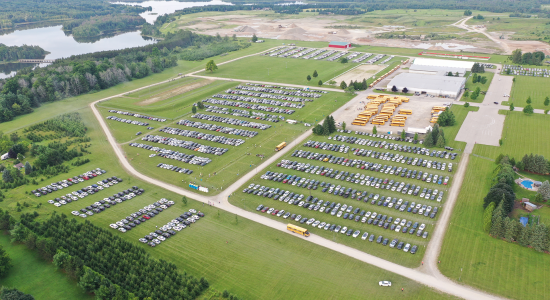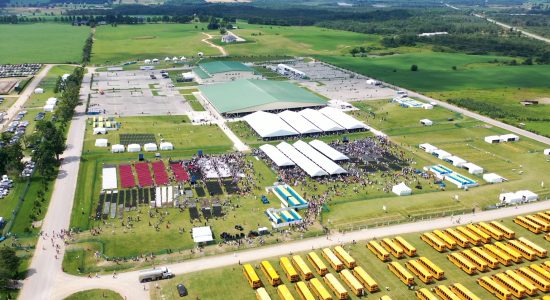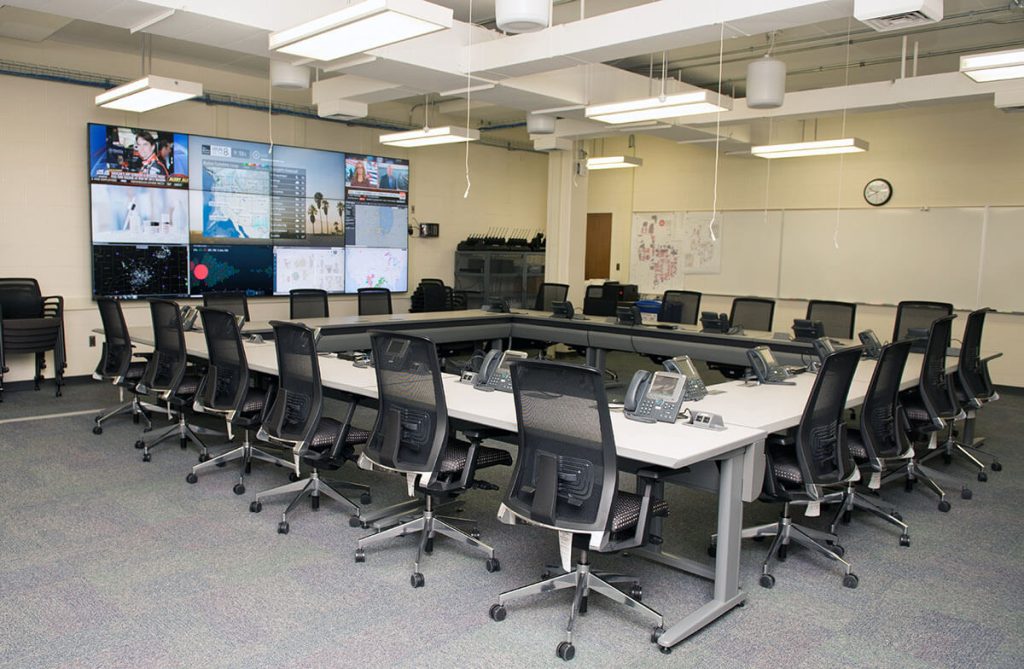UAV Ontario Supports Emergency Services Operations
Background
The annual RSSB event at the fairgrounds in Orangeville, Ontario, is one of the most anticipated gatherings in the region, drawing a crowd of 26,000 people and accommodating 3,900 vehicles. Given the scale of the event, ensuring the safety and smooth operation of traffic and emergency response is paramount. This year, UAV Ontario was tasked with providing drone operations to support the Emergency Operations Center (EOC) and coordinate with local law enforcement and emergency services.
Objectives
Enhance Traffic Management: Provide real-time imagery of traffic at major intersections to identify and address congestion points.
Improve Emergency Response: Enable quick dispatch of emergency services based on real-time data.
Ensure Public Safety: Monitor the crowd and vehicle movement to prevent and respond to any incidents effectively.
Preparation
Prior to the event, UAV Ontario conducted thorough planning sessions with the emergency services team. Key steps included:
Site Surveys: To identify critical areas for monitoring, including major intersections and high-traffic zones.
Coordination Meetings: Detailed coordination meetings were held with local law enforcement and emergency services to establish communication protocols and define roles.
Technology Setup: The drone fleet was equipped with high-resolution cameras and broadcasting capabilities back to the EOC to ensure high-quality, real-time imagery.



Operations During the Event
On the day of the event, UAV Ontario deployed drones to cover the designated areas. The operations were conducted in three phases: prior to the event, during the event, and after the event.
Prior to the Event:
- Drones were deployed to monitor the initial influx of vehicles.
- Real-time imagery helped the EOC identify potential bottlenecks and take preemptive measures.
During the Event:
- Continuous aerial surveillance provided up-to-date information on traffic flow and crowd movement.
- Any emerging traffic concerns were immediately communicated to the EOC, allowing for rapid response.
- Drones also monitored emergency access routes to ensure they remained clear.
After the Event:
- UAVs tracked the egress of vehicles and people to ensure a smooth and safe departure from the fairgrounds.
- Post-event analysis of traffic patterns was conducted to provide insights for future event planning.
Outcomes
The involvement of UAV Ontario had a significant positive impact on the management of the event:
- Efficient Traffic Management: The real-time imagery provided by the drones allowed for dynamic adjustments to traffic control measures, reducing congestion and improving the overall flow of vehicles.
- Enhanced Emergency Response: The immediate availability of aerial views enabled faster dispatch of emergency services, which was crucial in addressing incidents swiftly.
- Improved Public Safety: Continuous monitoring helped prevent potential safety hazards and ensured a quick response to any issues that arose.
Conclusion
UAV Ontario’s integration into the emergency services operations for the annual event in Orangeville was a resounding success. The use of drone technology provided unparalleled situational awareness and enhanced the capabilities of the EOC, law enforcement, and emergency services. This underscores the value of incorporating UAVs into large-scale event management and emergency response strategies.
UAV Ontario remains committed to leveraging advanced drone technology to support public safety and emergency management in various scenarios.
